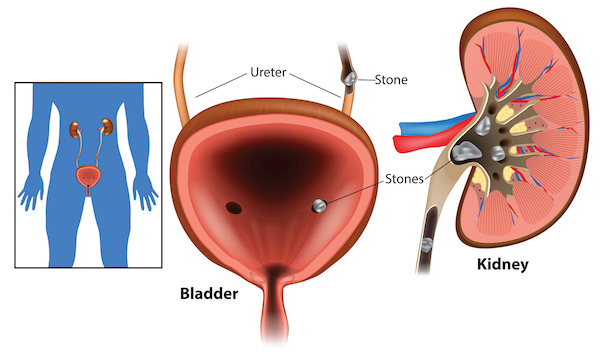Often found in the kidneys or ureter, kidney stones can cause considerable pain and infections without timely treatment. Kidney stone treatment depends on the type, size, and location where it is exactly detected.
Here, we will discuss the kidney stone chart size along with the treatment options. If you are still having trouble finding effective treatment please consult an experienced urologist.
Why is understanding the size of kidney stones important?
It’s crucial to understand the size of kidney stones as it can help to determine the course of treatment needed.
- Treatment selection - The size of a kidney stone plays an important role in determining the appropriate treatment plan. Smaller kidney stones may be passed naturally with some lifestyle modifications. Whereas, larger kidney stones may require medications or surgical procedures.
- Treatment success - The success rate of removing kidney stones often depends on the size. Properly understanding the stone’s size ensures the selection of the most effective treatment method for successful results.
- Monitoring progress - Information about the kidney size is also essential for monitoring treatment success. Different diagnosis tests will help to check if the kidney stones are growing, remaining stable, or shrinking over time. This information is necessary for the urologist to plan further treatment.
- Preventive measures - For people with a history of kidney stones, knowing the size can help them modify their eating and lifestyle habits to reduce the risk of developing kidney stones.
- Different complications - The size of kidney stones can also influence various complications like obstruction, kidney damage, or urinary tract infection. By understanding the size of the kidney stone, one can reduce the future risks of developing kidney stones.
- Personalized treatment - By understanding the size of the kidney stone, the doctor can recommend the treatment plan according to the size and overall health of an individual.
Different treatments for different sizes of kidney stones
As we discussed the importance of knowing the size of a kidney stone. Here, we will discuss the different treatment options based on the size of the kidney stone sizes passage the kidney stone removal itself.
1. Small stones (Size <4mm)
Small-size kidney stones that measure up to 4mm are relatively easy to treat with some diet and lifestyle modifications. Here are some things that you can do for small kidney stones with home remedies:
- Drink plenty of water - Drink at least 2 liters of water per day to increase the urine flow and check for colorless urine throughout the day.
- Avoid unhealthy diet- Try to avoid junk and processed food that is loaded with high preservatives.
- Intake of high-fiber diet - Always eat a high-fiber diet with less salt to treat small kidney stones. Certain vegetables like spinach, tomatoes, and beetroot should be avoided.
- Check on caffeine intake - During the treatment, it is a good choice to have coffee in limited amounts. Also, avoid alcohol and soft drinks.
2. Medium-sized stones (Size 4 to 6mm)
Medium-sized kidney stones that measure up to 6mm require treatment as passing them naturally becomes difficult. Here are some treatments for medium-sized kidney stones -
- Extracorporeal Shock wave lithotripsy (ESWL) - Extracorporeal Shock wave lithotripsy is a non-invasive procedure that helps in cutting down kidney stones into small pieces so that they can pass easily through the urinary tract without causing any discomfort.
- Ureteroscopy - For medium-sized kidney stones, this procedure is recommended. For this treatment, a thin tube with a camera is passed into the urinary tract to locate and remove the kidney stone. The procedure is done under anesthesia and is recommended when the kidney stone is causing a lot of pain.
- Percutaneous nephrolithotomy (PCNL) - The procedure is done under general anesthesia and involves a surgical procedure where a tiny cut is made in the lower abdomen to remove the kidney stone.
3. Large stones (Size >6mm)
Large kidney stones are excruciating and require medical intervention and treatment to pass. Different, treatment methods and options for large and large kidney stones include -
- Ureteroscopy with laser lithotripsy - Similar to the procedure for medium-sized kidney stones, this treatment is done under anesthesia where a laser breaks down the kidney stones into small pieces.
- Percutaneous nephrolithotomy (PCNL) - Similar to the procedure for medium-sized kidney stones, this treatment is also done for large kidney stones. The treatment is carried out under general anesthesia. It involves a surgical procedure where a tiny cut is made in the lower abdomen to remove the kidney stone.
Conclusion
Understanding kidney stone sizes is crucial. Smaller kidney stones have higher chances of passing naturally with home remedies. Medium-size and very large kidney stones while small sized kidney stones might pass naturally treatment require medications or treatment like lithotripsy. Whereas, larger kidney stones require more invasive treatments like ureteroscopy and percutaneous nephrolithotomy. Consulting the best urologist for guidance based on kidney stone size is vital for effective treatment.
